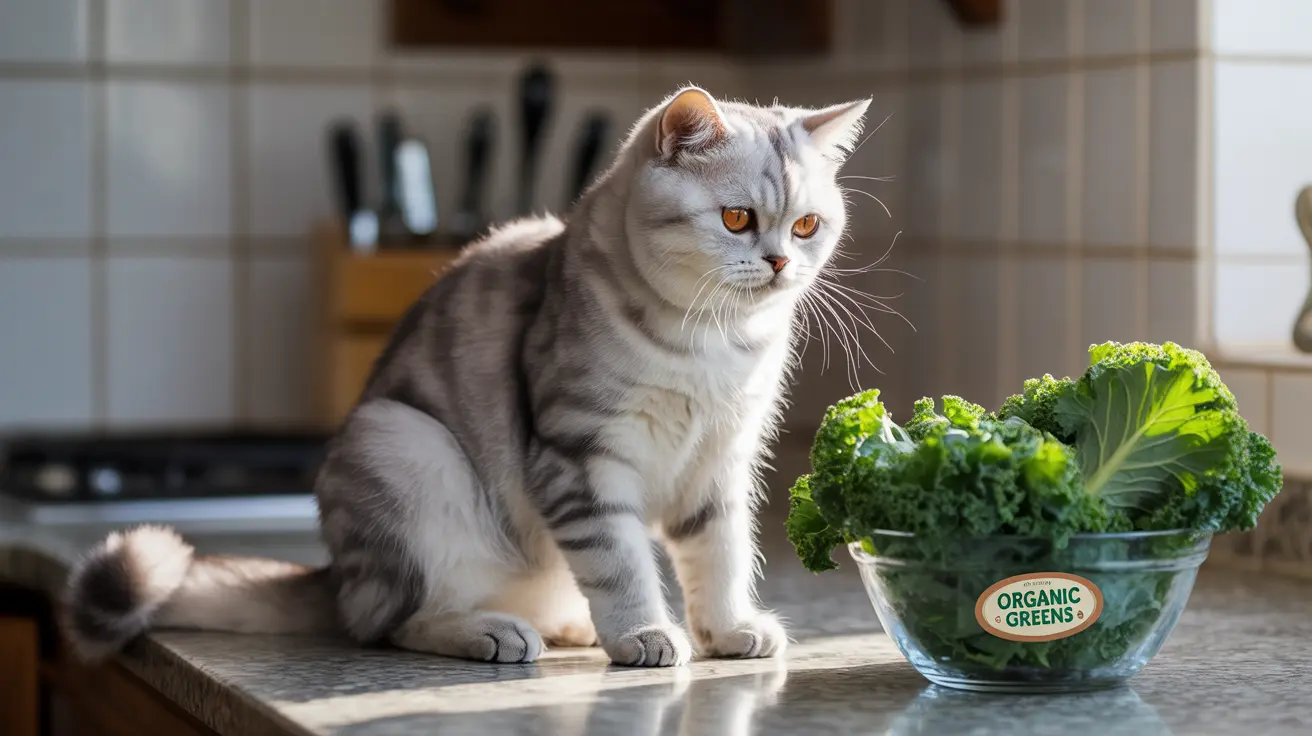Understanding Cats' Dietary Needs
Cats are obligate carnivores, which means their bodies are specifically designed to process and utilize nutrients from animal-based proteins. Unlike humans, cats have evolved with limited ability to digest and extract nutrients from plant materials.
Their digestive systems lack certain enzymes necessary for processing plant matter effectively, making many vegetables, including kale, unnecessary and potentially problematic additions to their diet.
The Truth About Kale and Cats
While kale isn't technically toxic to cats, it presents several significant health concerns that make it an unsuitable food choice for feline consumption. Even small amounts can potentially trigger adverse reactions in some cats.
Potential Health Risks
The most serious concerns associated with cats eating kale include:
- Heinz body anemia (a serious blood condition)
- Thyroid function disruption
- Formation of calcium oxalate stones
- Digestive system irritation
- Potential allergic reactions
The Anemia Risk Factor
Kale contains compounds that can damage feline red blood cells, potentially leading to Heinz body anemia. This condition can cause lethargy, weakness, and pale gums, requiring immediate veterinary attention. Even small amounts of kale may trigger this reaction in sensitive cats.
What Happens If Your Cat Eats Kale?
If your cat consumes kale, watch for these warning signs:
- Vomiting or diarrhea
- Lethargy or weakness
- Changes in gum color
- Reduced appetite
- Unusual behavior or discomfort
Contact your veterinarian immediately if you notice any of these symptoms after your cat ingests kale.
Safe Dietary Alternatives
Instead of kale, focus on providing your cat with:
- High-quality commercial cat food
- Veterinarian-approved treats
- Small amounts of cooked lean meats (as occasional treats)
- Fresh, clean water
Frequently Asked Questions
Can cats safely eat kale, and what are the risks involved?
While kale isn't toxic to cats, it's not recommended due to risks including Heinz body anemia, thyroid disruption, and digestive issues. The potential health risks outweigh any possible benefits.
How should kale be prepared if I want to give a small amount to my cat?
If you must offer kale (which isn't recommended), it should be thoroughly washed, steamed, and finely chopped. However, veterinarians generally advise against feeding kale to cats at all.
What symptoms should I watch for if my cat accidentally eats kale?
Monitor for signs of anemia (pale gums, lethargy, weakness), digestive upset (vomiting, diarrhea), and unusual behavior. Seek veterinary care if these symptoms appear.
Why is kale not recommended as a regular part of a cat's diet?
Cats are obligate carnivores and lack the necessary enzymes to properly digest plant matter. Additionally, kale contains compounds that can cause blood disorders and other health issues in cats.
Are there safer vegetable alternatives to kale for cats?
While cats don't require vegetables in their diet, small amounts of cooked carrots or green beans are safer options if approved by your veterinarian. However, commercial cat food provides all necessary nutrients.
Conclusion
While kale offers numerous health benefits for humans, it's best to keep this leafy green out of your cat's diet. The potential risks far outweigh any possible benefits, and cats receive all their necessary nutrients from high-quality commercial cat food.
If you're interested in supplementing your cat's diet, always consult with your veterinarian first. They can provide safe, species-appropriate recommendations that won't compromise your pet's health.






